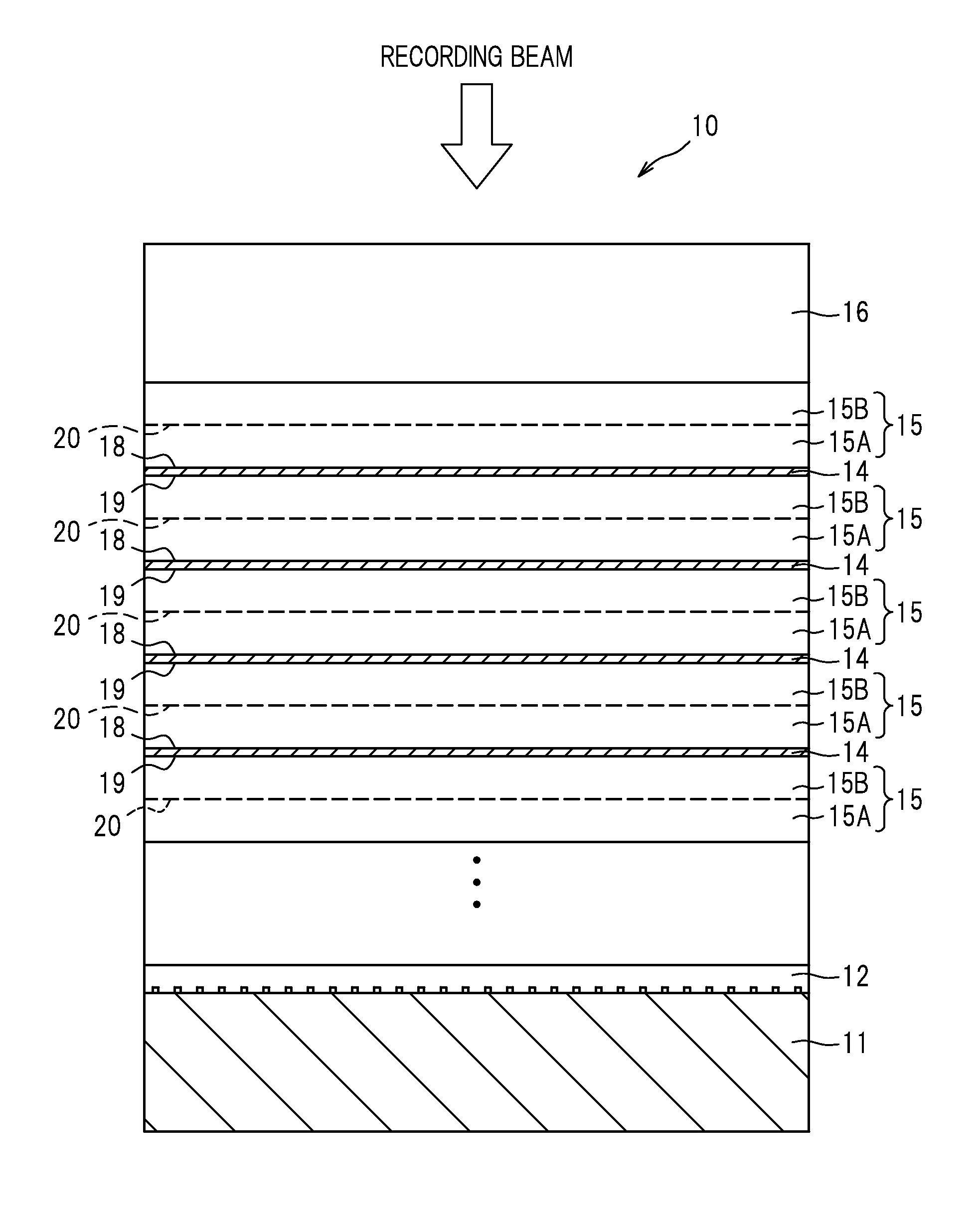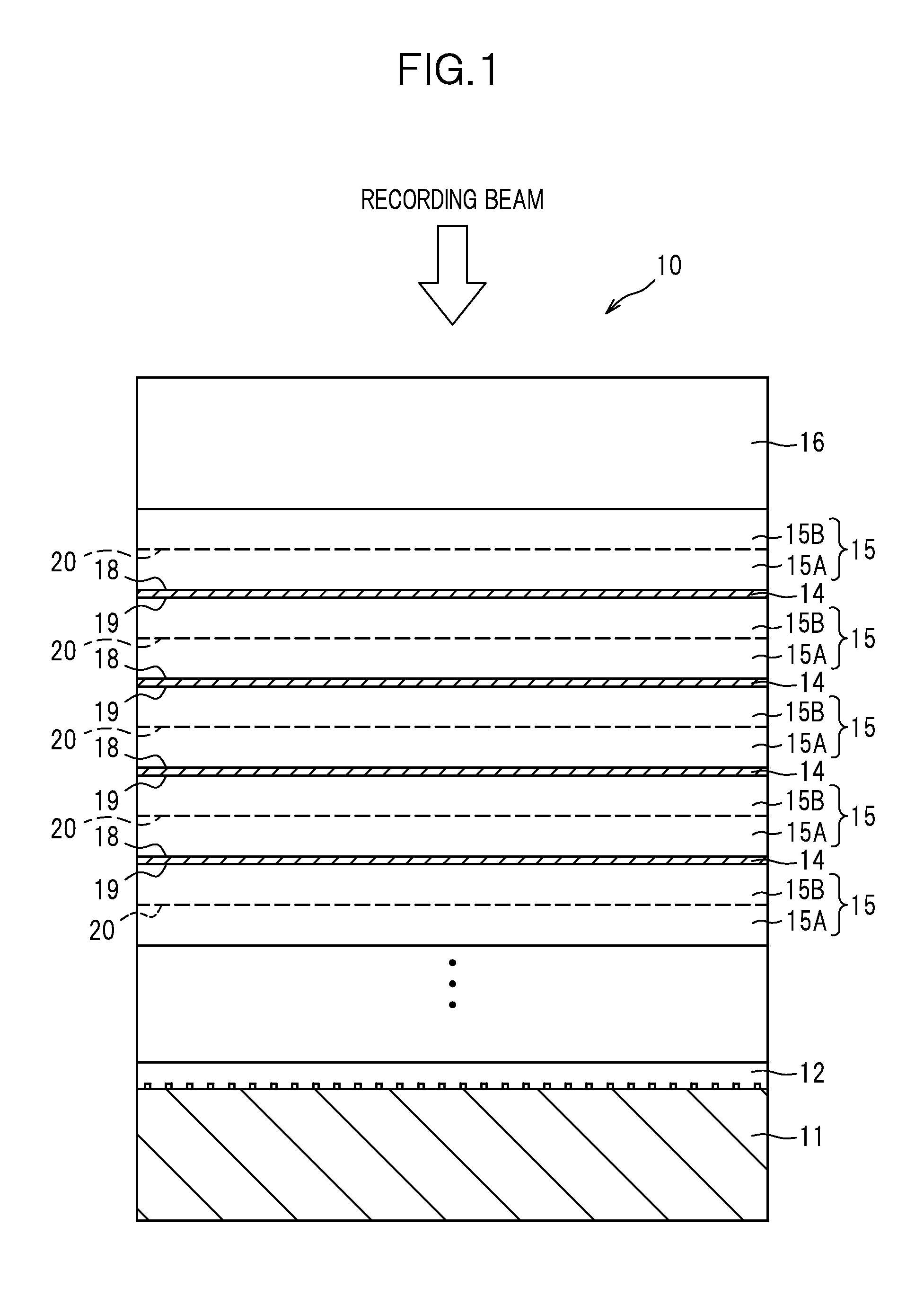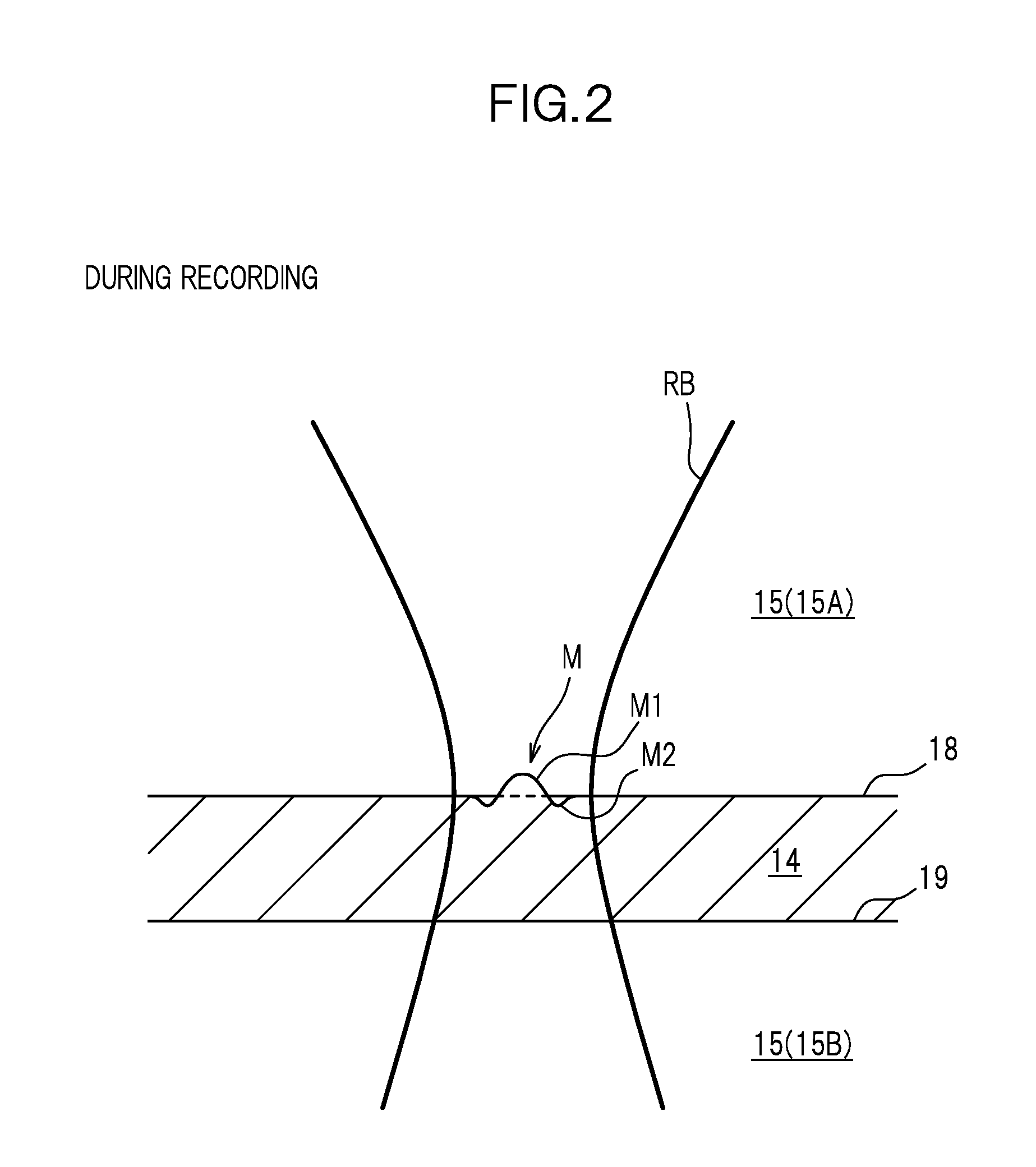Optical information recording medium
a technology of optical information and recording medium, which is applied in the field of optical information recording medium, can solve the problems of insufficient recording sensitivity and insufficient reception of energy, and achieve the effects of increasing the number of recording layers, increasing storage capacity, and reading information easily
- Summary
- Abstract
- Description
- Claims
- Application Information
AI Technical Summary
Benefits of technology
Problems solved by technology
Method used
Image
Examples
examples
[0077]Description will be given of experiments for recording on and erasing from an optical information recording medium according to the present invention.
1. Recording Material
[0078]In these examples, a recording material which contains a polymer binder and dye dispersed in the polymer binder was used.
[0079](1) Polymer Binder
[0080]Polyvinyl acetate (from Across Co., Ltd.; Mw: 101600) or polymethylmethacrylate (from SIGMA-ALDRICH Corporation) was used as the polymer binder.
[0081](2) Dye
[0082]Either one of or both of phthalocyanine-based one-photon absorption dye with the following structure C-1 and two-photon absorption dye with the following structure C-2 were used as the dye.
2. Formation Method for Recording Layer
[0083]Dye and a polymer binder were dissolved in a solvent (described later) while stirring to obtain a coating liquid. The coating liquid was applied to a glass substrate by spin coating to form a film on the glass substrate. The thickness of the film was 1 μm. The refra...
example 1
[0110]
Solventmethyl ethyl ketone (MEK) 7 gDyeC-1 compound 15 mgPolymer binderpolyvinyl acetate (PVAc)500 mg
example 2
[0111]Conditions of Example 2 were the same as those of Example 1, except that the following compound was used as the dye.
DyeC-2 compound72 mg
PUM
| Property | Measurement | Unit |
|---|---|---|
| thickness | aaaaa | aaaaa |
| thickness | aaaaa | aaaaa |
| thickness | aaaaa | aaaaa |
Abstract
Description
Claims
Application Information
 Login to View More
Login to View More - R&D
- Intellectual Property
- Life Sciences
- Materials
- Tech Scout
- Unparalleled Data Quality
- Higher Quality Content
- 60% Fewer Hallucinations
Browse by: Latest US Patents, China's latest patents, Technical Efficacy Thesaurus, Application Domain, Technology Topic, Popular Technical Reports.
© 2025 PatSnap. All rights reserved.Legal|Privacy policy|Modern Slavery Act Transparency Statement|Sitemap|About US| Contact US: help@patsnap.com



